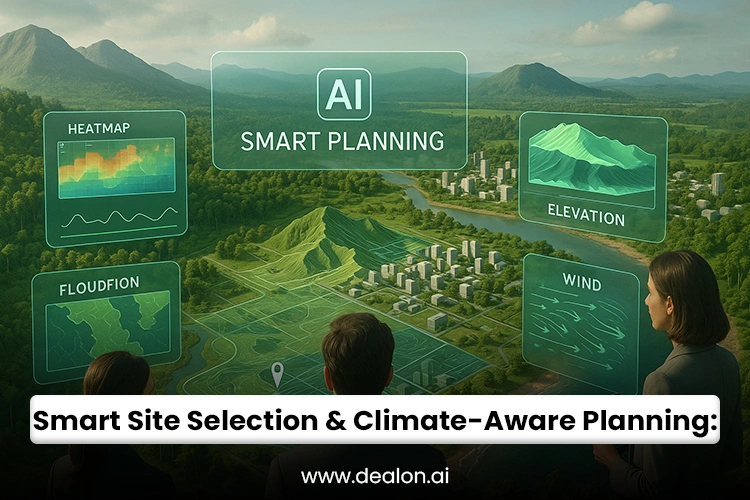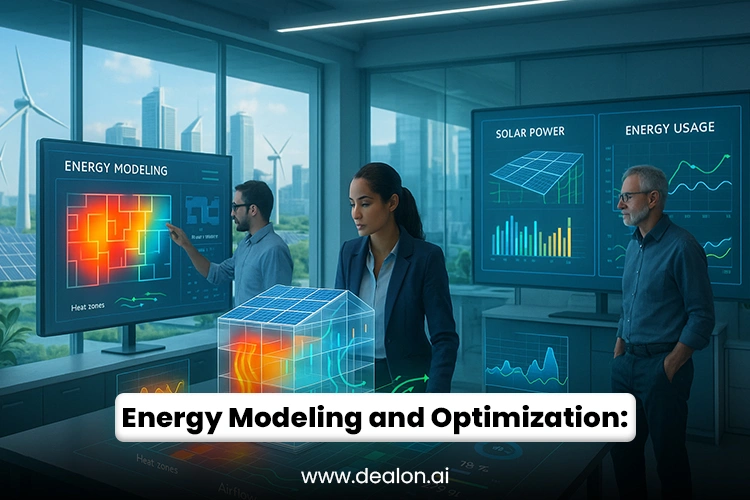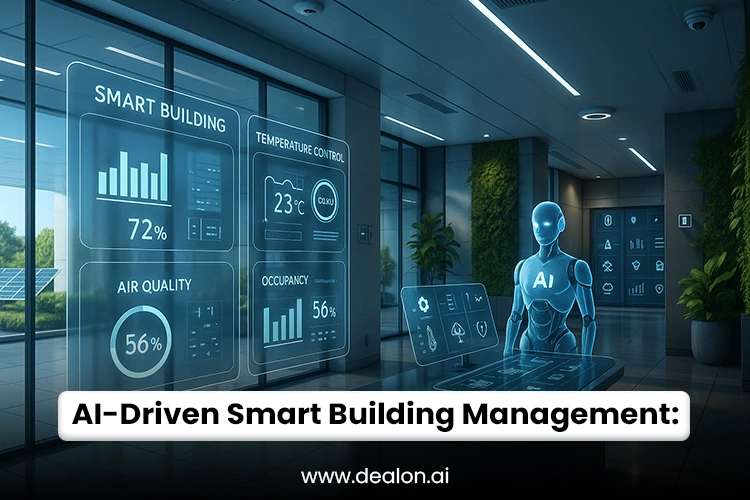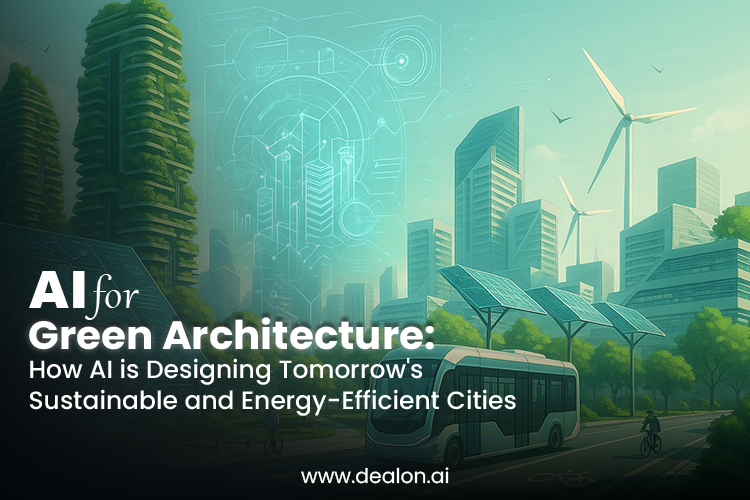As cities expand and climate change intensifies, the architectural and urban planning sectors are redefined by an urgent imperative: sustainability. The future of urban development lies in creating built environments that are functional, aesthetically compelling, and environmentally regenerative. In this pivotal transition, Artificial Intelligence (AI) has emerged as a transformative force, empowering architects, engineers, and urban planners to design smarter, greener, and more adaptive spaces.
AI’s integration into green architecture is no longer theoretical; it is a practical necessity. By leveraging vast datasets—from climate patterns and energy usage to human behavior and material efficiency—AI offers unprecedented precision in sustainable decision-making. It enables real-time modeling of environmental impacts, predictive simulation of energy consumption, and optimal site selection based on ecological and infrastructural variables. The result is a data-enriched design process that enhances environmental performance while reducing waste, emissions, and operational costs.
Moreover, AI facilitates the automation of sustainability goals through intelligent building systems that self-regulate energy and air quality or predictive urban planning tools that anticipate climate risks and urban density challenges. These intelligent frameworks support compliance with green building standards and the realization of visionary, net-zero cities.
Integrating AI with architecture signifies a fundamental shift in designing and building urban spaces as the global focus moves toward climate resilience and carbon neutrality. This blog explores six groundbreaking ways AI drives sustainable urban transformation—from material optimization and energy modeling to smart infrastructure and biodiversity preservation. In doing so, it reveals how technology is not just complementing design—it’s revolutionizing the foundation of sustainable living in the 21st century and beyond.
Also Read: 5 Ways AI-Powered Analytics Can Refine Your Content Strategy
1. Smart Site Selection and Climate-Aware Planning

Site selection is one of the most critical—and often overlooked—steps in sustainable architecture. The location of a building significantly impacts its long-term energy efficiency, environmental footprint, and integration with surrounding ecosystems. AI is now revolutionizing this foundational phase through climate-aware geospatial intelligence, enabling architects and urban planners to make data-driven, environmentally responsive decisions from the ground up.
AI-powered geospatial analysis tools synthesize many environmental and infrastructural variables, including topography, solar irradiance, wind flow patterns, proximity to green corridors, flood risk zones, and existing utility infrastructure. These algorithms process satellite imagery, LiDAR data, and historical climate records to evaluate a proposed site’s ecological suitability and long-term viability.
For instance, by assessing solar orientation and shade projections throughout the year, AI can recommend optimal building alignment to maximize passive solar gain in winter and minimize overheating in summer. Similarly, wind flow analysis ensures natural ventilation can be leveraged, reducing reliance on mechanical systems. Microclimate modeling helps architects respond to urban heat islands, humidity, and precipitation patterns.
Furthermore, AI platforms can integrate social and economic data, such as access to public transportation, walkability scores, and noise pollution, to ensure that new developments are sustainable, socially inclusive, and contextually appropriate.
The result is a holistic, sustainability-centric planning process where environmental intelligence informs every design choice. By front-loading sustainability into the DNA of urban development, AI empowers designers to create buildings and neighborhoods that are climate-resilient, resource-efficient, and deeply attuned to their environmental context.
In an age where every square meter of urban land counts, AI is helping us design smarter, ushering in a new era of green architecture rooted in precision, foresight, and planetary stewardship.
2. Energy Modeling and Optimization

Energy efficiency is no longer a passive design outcome—it is a strategic imperative that begins well before the first brick is laid. With the integration of Artificial Intelligence, architects and engineers can now perform sophisticated energy modeling simulations during the conceptual phase, allowing for the intelligent refinement of building performance long before construction commences.
Machine learning algorithms can simulate dozens of energy usage scenarios, adjusting variables such as insulation thickness, glazing ratios, window orientation, HVAC systems, thermal bridging, and natural ventilation pathways. These simulations are powered by massive datasets encompassing climate conditions, occupant behavior, material properties, and building typologies. AI identifies inefficiencies and recommends optimized configurations that align with sustainability goals and occupant comfort.
What distinguishes AI in this context is its ability to learn and adapt continuously. Smart buildings with IoT sensors feed real-time energy data into AI systems after construction. These platforms analyze usage patterns, detect anomalies, and dynamically fine-tune systems for peak efficiency. Predictive analytics can forecast energy demand and preemptively adjust operations, reducing operational costs and extending system lifespans.
AI facilitates integrated system modeling, factoring in renewable energy. It can recommend when to store, use, or redistribute energy based on pricing, grid strain, and environmental conditions, transforming buildings into active participants in sustainable urban grids.
Ultimately, AI’s role in energy modeling and optimization transcends reactive efficiency. It empowers buildings to be responsive, self-regulating, and strategically sustainable. By embedding intelligence into both design and operation, AI is ushering in a new era of architecture that proactively minimizes carbon impact while maximizing environmental harmony and user well-being.
3. Sustainable Materials and Waste Reduction
In pursuing energy-efficient, sustainable architecture, the materials we choose and how we use them are paramount. The construction sector is responsible for significant global carbon emissions, mainly from material extraction, production, and waste, affecting energy consumption. Artificial Intelligence (AI) transforms how architects and builders approach this challenge by optimizing energy-efficient material selection and minimizing construction waste through data-driven precision.
AI algorithms can conduct comprehensive energy lifecycle assessments (LCA) for thousands of building materials. AI helps designers select materials that align with green certifications and long-term sustainability targets by evaluating embodied carbon, toxicity, durability, energy efficiency, and recyclability. These tools can also suggest regionally sourced alternatives, reducing emissions and energy consumption associated with transportation and supporting local supply chains.
Beyond material choice, AI is pivotal in energy-focused construction planning and waste management. By analyzing design models and construction timelines, machine learning systems optimize material quantities, prevent over-ordering, and synchronize deliveries to match real-time project needs. This just-in-time material deployment reduces on-site waste, storage requirements, energy use, and logistical emissions. AI also contributes to energy-efficient modular construction and prefabrication strategies, where components are manufactured with minimal waste and high precision.
Predictive algorithms identify opportunities to reuse and recycle off-cuts, packaging, and demolition debris, advancing the principles of the circular economy within the energy-efficient built environment. Moreover, intelligent platforms track material usage across projects, creating data-rich feedback loops that inform future design decisions and improve energy-focused sustainability benchmarks. The building industry can decrease environmental impact by integrating AI into selecting and managing energy-efficient construction materials. This approach ensures that structures are energy-efficient, ethically constructed, and environmentally accountable from foundation to finish.
4. Urban Biodiversity and Environmental Impact Analysis
As urbanization intensifies, preserving biodiversity and mitigating ecological degradation has become vital to sustainable city planning. AI is rising as a powerful ally in this endeavor, offering data-rich environmental impact assessments that enable architects and urban planners to design with ecological sensitivity and resilience.
AI-powered environmental analysis tools integrate satellite imagery, drone footage, and GIS mapping data to evaluate critical ecological indicators such as soil permeability, water runoff behavior, habitat fragmentation, and existing flora and fauna distributions. These insights allow planners to anticipate the environmental consequences of urban development long before construction begins.
AI can test various architectural layouts and infrastructure placements through machine learning simulations to assess their influence on biodiversity corridors, native vegetation continuity, and microclimate stability. For instance, the software can identify optimal zones for rain gardens, bioswales, or green roofs to mitigate runoff and enhance pollinator habitats. It can also propose vegetation strategies to combat urban heat island effects using predictive climate models and historical temperature data.
Importantly, AI helps ensure that developments are ecologically integrated, not invasive. It supports strategic greenery placement to preserve wildlife corridors, reduce noise and air pollution, and enhance the psychological well-being of urban residents through biophilic design.
Moreover, AI tools can be programmed to align with environmental regulations and biodiversity action plans, ensuring compliance while promoting regenerative urban practices. These systems also offer ongoing monitoring capabilities, enabling adaptive management of green spaces and real-time biodiversity tracking post-construction.
5. AI-Driven Smart Building Management

Sustainable architecture doesn’t end with design and construction—it thrives in ongoing, intelligent management. AI-driven innovative building systems are revolutionizing how buildings operate, ensuring they adapt continuously to real-time conditions and occupant needs while minimizing energy and resource consumption.
With IoT sensors, predictive analytics, and self-learning algorithms, AI-enabled systems monitor and optimize key performance metrics such as energy efficiency, air quality, lighting, HVAC operations, and water usage. These systems create dynamic, responsive environments that adjust to real-time occupancy, weather, and user behavior fluctuations.
For instance, AI can dim lighting or adjust temperature based on the number of people in a room, the time of day, or even the angle of incoming sunlight. Ventilation systems can react to indoor air quality readings, modifying airflow to maintain comfort while reducing energy consumption. Water usage is similarly optimized by detecting leaks early, adjusting irrigation schedules based on weather forecasts, and minimizing wastage.
Through continuous data collection and pattern recognition, AI anticipates maintenance needs, identifies inefficiencies before they escalate, and recommends proactive interventions, extending the building’s lifespan and reducing operational costs. Moreover, innovative building platforms support integrated building management, unifying control over disparate systems into a centralized dashboard. Facility managers gain complete transparency into building performance, while AI assists in compliance with green certifications such as LEED, WELL, and BREEAM.
These adaptive ecosystems represent a paradigm shift—from static infrastructure to living, learning environments that evolve with their users. AI transforms buildings into active agents of sustainability, ensuring they remain functional and environmentally responsible throughout their lifecycle. In this way, AI is bridging the gap between high-performance design and long-term ecological stewardship.
6. Predictive Urban Planning and Resilience Modeling
In a time characterized by increasing climate challenges and fast-paced urban growth, the ability to foresee and adapt to future challenges is paramount. AI-driven predictive urban planning and resilience modeling empower cities to move beyond reactive design, enabling proactive strategies that foster long-term sustainability and climate resilience.
These advanced AI models harness data from satellite imagery, historical weather patterns, infrastructure stress points, and socio-economic demographics to simulate future scenarios. By factoring in climate variables such as rising sea levels, extreme heat, precipitation shifts, and storm surges, AI enables urban planners to assess how today’s development decisions will affect a city decades into the future.
Through simulation and geospatial analytics, AI can identify high-risk flood zones, heat-vulnerable neighborhoods, and overstressed transportation corridors, helping planners allocate resources and infrastructure more equitably and efficiently. This foresight informs decisions on where to build, what to reinforce, and how to integrate green infrastructure like permeable pavements, urban forests, and stormwater retention systems.
Moreover, AI models support dynamic zoning and land-use planning, allowing cities to adjust based on real-time population trends, migration patterns, and infrastructure loads. These systems can also analyze emergency response routes, optimize evacuation plans, and simulate the impact of natural disasters, enhancing overall urban preparedness.
Predictive modeling tools encourage cross-sector collaboration, integrating inputs from architects, engineers, environmental scientists, and policymakers. The result is a unified vision of resilient, inclusive urban development.
As cities face mounting environmental pressures, AI offers a powerful lens to envision and engineer their evolution. By embedding resilience into urban planning, AI ensures that tomorrow’s cities are brighter, stronger, safer, and strategically prepared for the uncertainties of a changing world.
Conclusion
As the world confronts the dual challenges of rapid urbanization and environmental degradation, Artificial Intelligence emerges as a transformative force in green architecture and urban planning. From intelligently selecting building sites to optimizing energy use, reducing material waste, and fostering biodiversity, AI empowers architects, engineers, and city planners to design resilient, resource-efficient, and environmentally attuned spaces.
AI doesn’t merely enhance isolated elements of sustainable design—it integrates and elevates them into a holistic, adaptive ecosystem. Smart buildings learn and evolve based on occupant behavior. Predictive models simulate future climate risks, informing infrastructure decisions that safeguard communities. Material selection algorithms support circular construction, while biodiversity analysis tools ensure urban ecosystems thrive.
Most critically, AI bridges the gap between visionary ideals and practical implementation. It transforms sustainability from an aspirational concept into measurable, data-driven action, helping cities and buildings meet global climate goals without compromising functionality or livability.
As we move toward a net-zero future, the convergence of AI and sustainable design isn’t optional—it’s essential. By embracing intelligent, green technologies, we are not only mitigating the environmental impact of our built environment but also laying the foundation for a brighter, healthier, and more harmonious urban future.


iamanus.com
Great insights! Tools like IA Manus are pushing AI beyond simple tasks into true autonomy, which is a game-changer for productivity and strategy in tech-driven fields.